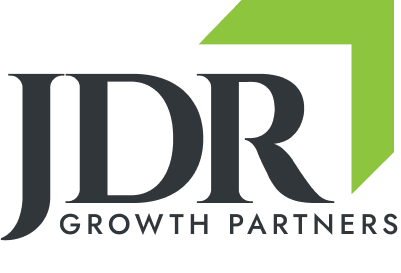Fueling Commitment Through Relentless Communication
You might be surprised by how many people in most companies aren’t truly “in.” Many employees operate in the dark – not because they don’t care, but because they lack consistent, candid communication that connects them to the vision of the organization.
Their leaders often spend most of their time behind closed doors tackling urgent matters, leaving little time for open, ongoing communication that reaches every employee with the clarity and context needed to fully engage the entire workforce.
Every organization and its culture are constantly evolving. Consider these vital questions:
- How much of your change is being strategically orchestrated versus evolving organically?
- Is there a clearly articulated and motivating vision of long-term success?
- Do you have a plan with measurable goals and strategies to realize that vision?
- Does the plan address how culture must evolve to achieve those goals?
- Does your workforce understand the plan and their role in it?
- Is the vision communicated consistently enough for everyone to be “all-in”?
The Leader’s Reality
Improving results and evolving culture require behavior change, and that starts with commitment. Commitment depends on understanding why change is necessary, which hinges on persuasive, repeated communication from leaders at all levels.
Most leaders want transformation to happen like flipping a switch. They’re results-driven, and ready to move fast. But for the workforce, change feels more like a journey. Some people are ready to go; they’re the difference-makers you must recognize publicly and often. Most, however, need encouragement and clarity.
People don’t actually fear change—they fear loss. Change can threaten competence, relationships, territory, security, and even identity. To earn commitment, leaders must provide rational and compelling context: Why is this worth the risk? What’s in it for me? How can I make a difference and help us win?
It’s not enough to say something once. Research shows most people need to hear a message at least seven times before it truly lands, and it must clearly answer two questions:
1. What does this mean for me?
2. How can I help us win?
The Perception Gap
Ask most leaders how well they communicate, and they’ll say it’s a top priority. They hold meetings, share results, and think they’re connecting. But perception is often far from reality. Effective communication requires empathy—seeing the world through employees’ eyes, not just a leader’s.
The command-and-control era is over. People don’t respond to “do it because I said so.” They want meaning, connection, and trust. Yet too often, leaders craft messages from their own perspective rather than the audience’s.
Patrick Lencioni captured this dynamic well in The Three Signs of a Miserable Job:
• Anonymity – feeling unknown or unseen by leadership
• Irrelevance – not understanding how one’s work makes a difference
• Immeasurement – lacking a way to gauge personal contribution
I’ve worked with many executives who believe their workforce is aligned and committed. But candid employee conversations often reveal a different truth. FranklinCovey found that only 15% of employees could name even one of their company’s top three goals. Among those who could, barely half were committed to achieving it.
Worse, 81% said they weren’t held accountable for progress on company goals, and only 34% met with their manager monthly to discuss them.
Another study by Towers Watson found that while 86% of employees like their jobs, only 21% are truly engaged—willing to go the extra mile. That gap between satisfaction and engagement represents the biggest opportunity for leaders to improve results.
Consider these findings:
- Companies in the top quartile of engagement scores had 50% higher total shareholder return than the average company (Aon Hewitt)
- Highly engaged employees are 87% less likely to leave their organization (Business Leadership Today)
- Engaged workplaces see 70% fewer safety incidents (Business Leadership Today)
- Companies with highly engaged employees score 34% higher in customer satisfaction ratings (Vance & Associates)
- Engaged employees exhibit 17% higher productivity and 60% higher quality than less engaged employees (Insync Surveys)
And even the best leaders receive filtered information. Praise travels up the hierarchy much faster than honest feedback. According to Towers Watson, only 38% of employees believe senior management genuinely cares about their well-being; fewer than 40% believe top leaders communicate openly and honestly.
Assume that’s your starting point. Then communicate relentlessly to build the trust, context, and belief required for people to go “all-in.”
What Matters Most
No one is obligated to follow anyone; it’s an opt-in world. People want to identify with a meaningful cause and see their leaders model authentic commitment. Senior leaders must help everyone at every level paint a compelling picture of future success—and communicate it long after they think people understand it.
To move people from compliance to commitment, leaders must craft messages from the receiver’s perspective. Think about the people you are communicating with — not your own ego or ambitions — when crafting your message. This instantly makes you more respectful of their time and attention.
Here are five ways to communicate more effectively:
1. Lead Transparent Town Halls
Use these meetings to connect strategy, culture, and performance. Tie everything back to vision, purpose, and goals. Share progress honestly—wins and misses alike. Feature difference-makers to model success, teach something practical at every session, and always make time for authentic Q&A.
2. Meet Them Where They Are
People are more distracted than ever and our attention spans are increasingly challenged by smart phones, social media, podcasts, web-based platforms, etc. Reinforce key messages using contemporary communication avenues and tools that make it easier for your people to consume and retain what matters. Keep it short and simple. Given the level of distraction, you can’t expect them to engage or remember long or confusing messages.
3. Champion the Company Externally
Communicate the company’s vision and values to partners, customers, and suppliers. They want to see that your objectives align with theirs and that collaboration can drive shared success.
4. Spend Time with the Troops
Schedule daily “walk-arounds” or small-group discussions to listen and learn. Remote teams, field employees, and plant workers need to feel seen. Treat this time as sacred; it builds credibility faster than any memo and the learning you will glean will pay dividends.
5. Stay Deeply Involved in Talent
Participate in talent reviews beyond your direct reports and recruitment conversations. Show that top leadership cares about developing and retaining great people, which signals priorities across the organization.
6. Catch People Doing Things Right
Recognition amplifies influence. Publicly celebrate employees who model core values or deliver exceptional results. Use handwritten notes or awards like a President’s Award to reinforce what “great” looks like. Balance praise with constructive coaching, but lead with appreciation. Nobody thrives under constant criticism, and everyone can use more affirmation. Use it to create success models for others to emulate.
In Closing
Every relationship and every company can benefit from stronger communication. It’s a strategic tool too often underused. If you want better results, double down on communication. Give people the clarity and confidence to embrace their role in your company’s success—and watch commitment, performance, and results rise together.





